The New Wave of British Heavy Metal was the simultaneous, sudden emergence of hundreds of heavy metal bands in the United Kingdom in the late 1970s and early eighties. The NWOBHM was prompted by the collapse en masse of earlier hard rock bands and heavy metal originators. Led Zeppelin and other blues-based riff rock bands had collapsed into meandering stadium rock with only a couple listenable songs per record at best (“Achilles Last Stand” on Presence). Black Sabbath fell flat on their faces after Sabotage, making the meandering duo of Technical Ecstasy and Never Say Die. Punk declined from almost-progressive works as the The Stooges’ Fun House to boy bands such as the Sex Pistols playing radio pop. Deep Purple regressed to playing what their former guitarist Ritchie Blackmore termed “Shoeshine music.”
The New Wave of British Heavy Metal would sweep all of these blights under the rug. Spurred by Judas Priest, the genre consisted of Black Sabbath influenced heavy metal riffing but made static, revolving around a single power chord like a rock ‘n’ roll song and played to a distinctive galloping rhythm that came to define the genre. Judas Priest placed these static, twin galloping metal riffs into verse-chorus-verse song rock song structures with Thin Lizzy influenced, dueling harmonized sweep-picked leads that progressed forward into a culminating lead or solo. These leads were often classically-influence courtesy of Ritchie Blackmore’s Rainbow and had operatic vocals (Rob Halford had one of the greatest vocal ranges in popular music history) that sang along with the guitars like Black Sabbath or around them like Led Zeppelin. This was the basic NWOBHM formula.
Hundreds of bands emerged trying to follow Priest’s template and most of them failed miserably. Those wannabes generally played vocally-driven bar rock that merely used one or two static heavy metal riffs as a backdrop for the frontman to sing about how long his penis was, how fast he could drive a sports car, or how bad ass he felt to go larping as a viking warrior. That is when these bums weren’t just directly copying AC/DC as a certain crappy band named Def Leppard did, even hiring AC/DC’s producer Mutt Lange. Most NWOBHM bands were not even close to instrumentally proficient enough musicians to copy Thin Lizzy or Judas Priest.
The glut of scenester bands overpraised by the mainstream media (read Malc MacMillan’s legendary N.W.O.B.H.M. Encyclopedia for everything and then some) caused the NWOBHM to collapse on itself. Most of the more promising bands only managed to get demos or one studio album out before imploding on themselves as financial rewards were impossible in an oversaturated market while the desire to become MTV rockstars by glamming up their sound in the early 80s was all too great. The movement deserved to crash and burn. So it did.
1980 was the peak seeing the release of Iron Maiden‘s debut, Angel Witch‘s self-titled, and Diamond Head‘s Lightning to the Nations, and Motorhead‘s Ace of Spades. Judas Priests career had culminated artistically and compositionally a year earlier with the Unleashed in the East live album, featuring sped up versions of most of their best tracks along with a few excellent cover renditions of seventies rock standards. Priest would sell out in 1980 as the movement peaked with British Steel tailor-made for singalong MTV videos to be played alongside Van Halen and Ozzy Osbourne’s solo career. Over the next few years, most of the significant bands broke up or followed Priest into glam rock excess: Diamond Head, Witchfinder General, Tank, Tokyo Blade, etc. Judas Priest never regained their composure to produce a fully-listenable record again, failing at being Motley Crue, Metallica, and “progressive” new millennium Iron Maiden. The NWOBHM was too rock to survive.
The following is not a list of the New Wave of British Heavy Metal’s best releases but of five bands who chose not to suckle on the stripperific glam rock music video teats or who broke up and later managed to comeback, creating artistically successful and competent heavy metal. These groups transcended the beer-fueled NWOBHM and cocaine days of MTV:
Angel Witch
After their Angel Witch – Angel Witch – “Angel Witch” self titled triumph, Angel Witch imploded along with the others. Guitarist and vocalist Kevin Heybourne reformed the group with an all new lineup in 1985 to release the meandering, mid-paced Screaming ‘n’ Bleeding. He tried more successfully over twenty years later with 2012’s As Above, So Below, which while not as great as the best work on Angel Witch, successfully and smoothly blended influences from Manowar and late 80s power metal (Blind Guardian) into Angel Witch’s New Wave of British Heavy Metal formula.
Black Sabbath
Heavy metal founders Black Sabbath emerged reinvigorated by the NWOBHM movement while not adopting the riffing or song structure styles themselves, just superficial production aesthetics and operatic vocals courtesy of Deep Purple and Iron Maiden producer Martin Birch and former Rainbow vocalist Ronnie James Dio. Tony Iommi regained on his profoundity on Heaven and Hell and Mob Rules.
Iron Maiden
Iron Maiden fired their original vocalist and convicted felon Paul Di’Anno and snatched Bruce Dickinson from Samson. Their initial attempt at becoming the Beatles of heavy metal on The Number of the Beast was incredibly grating and bone-headed but Maiden clawed their way back to form with the highlights amidst the occasional sing-along idiocy (“Sun and Steel”) on Piece of Mind. “The Trooper” and “To Tame a Land” paved the way for the more even Powerslave and the progressive rock explored on Somewhere in Time and Seventh Son of a Seventh Son. Afterwards exhausted of creative energy, Maiden reverted to playing the hits live with new albums made up of occasional competency, retreads, virtuoso instrumental wankery, and stadium sing-alongs. Nevertheless, Iron Maiden remains a potent touring force today.
Motorhead was the most influential band of the NWOBHM movement to future metal groups. Composing most of their material under the influence of amphetamines, they brought a formulaic but progressive song structures, melody, and chord progressions to heavy metal. Massive use of amphetamines surely resulted in high speed, repetitive mental cycles that kept Motorhead on track for their entire career even if all of their albums consist of three basic song structures made from heavy metal rhythm riffs played on Lemmy’s bass-less bass and chopped-up, minor key melodic leads: Hank Williams Sr. on meth ballads, heavy metal songs with rhythm riffs made of powerchord progressions, and thrashy e-string triplet bangers. Motorhead remain the most formative pre Slayer structural influence on death and black metal.
Satan
Satan took the New Wave of British Heavy Metal formula as far as it could go on the immortal Court in the Act. The blend of speed metal e-string triplet rhythm riffs pioneered on Black Sabbath’s “Children of the Grave” off Master of Reatity and Motorhead‘s “The Hammer” from Ace of Spades in with the NWOBHM gallops, harmonized sweep picked lead riffs paired perfectly to the rhythm riffs, and well written compositions contributed to a sense of artistic sublimity uncommon in the genre. The fixed, riff rock song structures of the NWOBHM kept Satan from meandering about, keeping their drive focused. Unfortunately Satan imploded, ditching vocalist Brian Ross, changing their name to Blind Fury, and losing the aggression in an attempt at appeal to glam rock audiences ready to suck on Whitesnake. Satan has reformed a few times with the NWOBHM structured record Life Sentence much more consistent than the technical speed metal “techno thrash” of Suspended Sentence and Atom by Atom which sounded like unrefined attempts at Coroner or Rust in Peace era Megadeth. Satan proved unable to string riffs together progressively like Mercyful Fate and Slayer; the band were never able to successfully move beyond songs composed of sets of verse and chorus riff pairs. These simplified song song structures do not hinder Satan’s excellent heavy metal material; rather they show just how far the NWOBHM sub-genre could be taken musically and artistically.
Tags: Angel Witch, black sabbath, Heavy Metal, iron maiden, judas priest, metal history, motorhead, NWOBHM, Satan
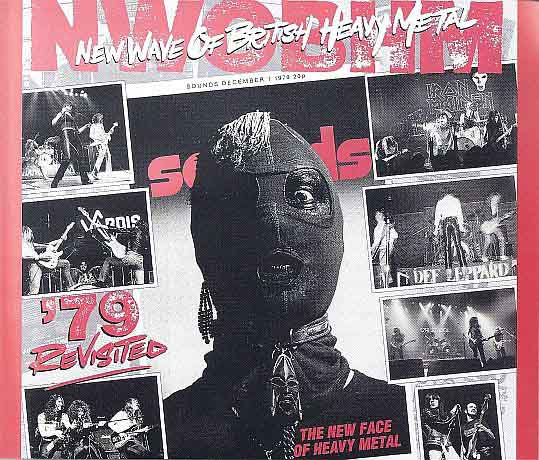
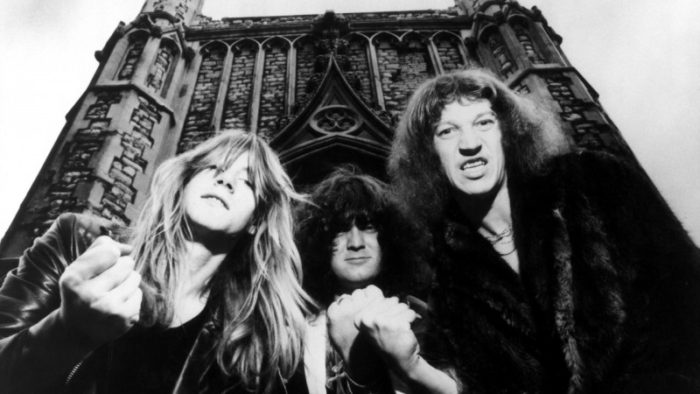
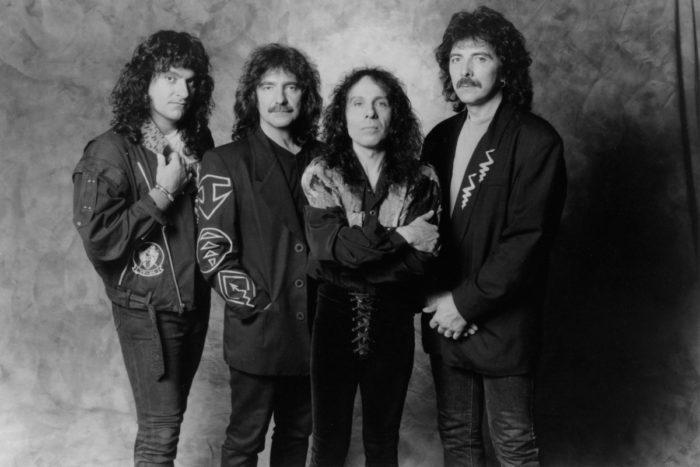
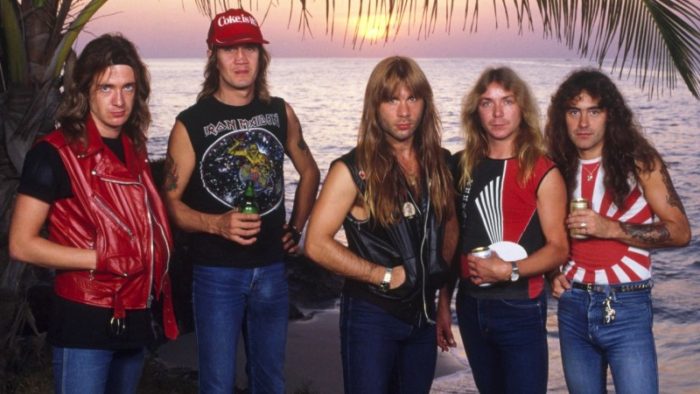
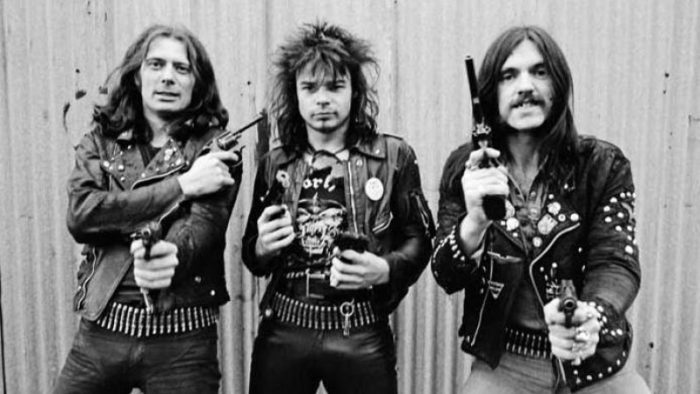
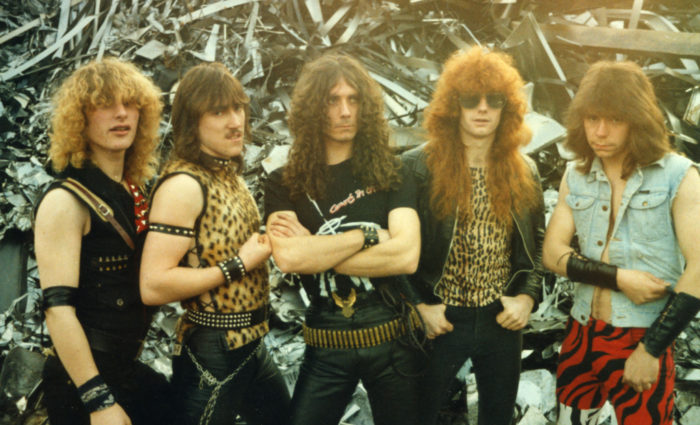


A nice refresher course. I definitely prefer the recent trend toward music related articles (as opposed to the ones about SJWs ganging up on you and stealing your lunch money).
Something in this grammar is confusing me, or maybe you left out a few words…? >>>
“the genre consisted of Black Sabbath influenced heavy metal riffing but made static, revolving around a single power chord like a rock ‘n’ roll song and played to a distinctive galloping rhythm that came to define the genre. Judas Priest placed these static, twin galloping metal riffs were placed in verse-chorus-verse song rock song structures”
I like this kind of metal a lot, but there are such few good bands in it. And even those good bands usually only have a few good tunes per album.
I disagree. Raven, Witchfinder General, Saxon, Pagan Altar etc have some really solid, consistently ripping albums!
Nigga please, none of those bands had more than one album of great material. Friends of Hell sucks syphilitic penis. The General’s comeback was nothing special.
>Punk declined from almost-progressive works as the The Stooges’ Fun House to boy bands such as the Sex Pistols playing radio pop.
Anti-Sex Pistols sentiment is such glaring historical revisionism. You guys rep Discharge, you think that stuff would exist without the Sex Pistols? It’s such a young-person-raised-by-the-internet trendy shit thing to hate on that band
Anyway, despite the blue collar 3 chord strain running through punk, the genre was only getting more “progressive” by the late 70s/80s (see PiL).
Hardcore and post-punk were in genre reactions to that.
The influence of Venom outside of the aesthetics is highly understated. Unfortunately their most interesting works are singles.
HELL were probably as good as Mercyful Fate (no exaggeration) and would’ve been a household name in the underground if more people than the reprehensible Andy Sneap had heard their demos. Related band Paralex also had some surprisingly ahead-of-their-time tunes for 1981.
The Scottish Holocaust had an interesting career, from their first stirrings of being explicitly anti-“rock’n’roll” (“..is far too slow!”) to very progressive albums like /Covenant/ in the ’90s, with some miserable failures along the way (/Hypnosis of Birds/). Too bad their new album /Predator/ is more “rock” than they had ever been.
BTW, Motorhead were never part of the NWOBHM (unlike what johnny-come-lately revisionists would have you think) although they were of course the biggest influence, along with Priest. And please, /Powerslave/ an “even” album? Other than the first track and the last two, it’s the definition of filler! I never want to hear ‘2 Minutes to Midnight’ ever again.
Hell’s riffs are much more hard rock than Mercyful Fate, their songwriting is much less progressive, and their guitarists way less sweep happy. Hell are clearly a NWOBHM band and Mercyful Fate are not.
Holocaust – The Nightcomers is good but yes their later career is super spotty with a lot of unlistenable stuff. Metallica stole some riffs from them. I should probably review it sometime.
Motorhead are contemporary enough and Sabbath isn’t NWOBHM either. Death Metal Underground and the Dark Legions Archives are absolute elitists and this list is not “interesting” bands or even the “best” releases of the subgenre. “Two Minutes to Midnight” is better than half of The Nightcomers‘ run time and isn’t even as close to as bad as “Gangland” or “Sun and Steel”.
Buddy, you KNOW “Powerslave” is the shit. Your “filler” is these?!>>>
02 – 2 Minutes To Midnight
03 – Losfer Words (Big ‘Orra)
04 – Flash Of The Blade
05 – The Duellists
06 – Back In The Village
Motorhead is not really a NWOBHM band. Initially, this was a project of Lemmy Kilminster after he had been kicked out of Hawkwind for “taking the wrong drugs” and Larry Wallis who was – at that time – the Pink Fairies guitar player. This is also visible in the music as Motorhead is clearly also a ‘blues-based band’. Stylistically, Tank, formed but ex-Damned Aggy Ward wit the Brabbs brothers, belongs to the same family and their 1982 debut was actually produced by ‘Fast’ Eddie Clarke. That’s the only album labelled as NWOBHM I ever bought and something one simply has to like, be it only because the unsurpassable
Love is like dragging your balls accross barbed wire
at the start of
https://www.youtube.com/watch?v=iVU04ZcaPsU
Tank are way more “rock” than Motorhead ever was. That has to be a Stooges riff there.
Tank are way more “rock” than Motorhead ever was.
I’d venture for the exact opposite: Tank remained an obscure ‘one album wonder’ nobody except me and Tom Angelripper likes (hefty simplification but that’s where I got it from). Motorhead had its share of top-ten hits and remains a singalong-favorite among not-quite-beer-metal guys to this day (that’s obviously not their fault :-). Motorhead is essentially Lemmy’s backing band. Tank is much more riff-based. The riffs are primitive and it’s very much hard rock still, but that’s true for NWOBHM-bands in general.
Tank are not riff based; The songs are driven by vocals atop static riffs like the worst of the NWOBHM. They took Motorhead and headed back towards 70s rock for beer metal audience. Tank are not obscure either and are much better known than say Hell.
Verse-chorus-verse songs are vocal-driven by design because they’re structured around different ‘kinds’ of singing: A repeating verse-melody used to intonate a changing text and a repeating chorus melody used for the unchanging chorus text.
Apart from that, I didn’t write “riff-based” but “more riff-based”: Motorhead is, always was and always wanted to be a rock band (cf “We’re Motorhead. We play rock’n’roll”). They’re close to the edge of what is still considered mainstream but mainstream nevertheless (NB: this is a statement of fact/ opinion, not a value judgement). Tank is distinct from most NWOBHM bands (I know) because they’re harmonically still rooted in the blues and didn’t go for the operetta/ musical singing style. But they’re nevertheless stylistically different from Motorhead. I can’t put this into learned words but style of guitar playing is different and the verse part of each track has a prominent verse-riff which is musically on equal footing with the sung part. Compare this to something like
https://www.youtube.com/watch?v=ws3uq6xe07Q
which has a short, instrumental intro, verse-chorus-verus with Lemmy signing and the guitar playing a chord accompaniement, a brigde with a pretty ‘classic’ rock solo, followed by drums plus singing, another verse and then ends in an (probably at least partially) improvised instrumental part with a ‘standard’ climax at the end. That’s a definition of ‘rock song’ (and a very good one, BTW). Even your own example is as hard rock as it could possibly be (I like that, too).
There are no ‘classical influences’ here, neither in the singing nor in the predominant use of common practice era harmonics but ‘classic’ is not some kind of “OMG! It’s so overpowering! I’m so insignificant! I must adore it!”
stuff. I don’t like this kind of music (except a few exceptions). This probably renders me a 20th century americanized barbarian in this respect but so be it.
PS for “J Random Funny Name”: This is not a diatribe. It’s also not an attempt at picking a fight. Or any other term which could be used to describe an activity whose factual content is a smokescreen for an intended, social effect.
Musical PPS: Both Tank and Motorhead have an uncanny similarity to ‘early Pink Fairies’. Eg, the Motorhead logo (or a variant of that) appears on a T-shirt in the “Do It!”-video and the vocal style is very much alike. Tank even covered The Snake. But considering that the Pink Fairies and Hawkwind played many infamous ‘free concerts’ together before the latter went overground, this isn’t much of a surprise.
Give Tank or any other band the lyric topics test and you can make the obvious busts. The average NWOBHM record does indeed have those heavy and fast riffs with relatively dark lyrical content… for the first two songs, if even that. Then come the love songs and sing-alongs. Throw in some hobbit fantasies like Flash of the Blade, some cool and sexy vampires… The real credit NWOBHM deserves is for the occasional good riffs and strong beats.
NWOBHM has nothing to compete with nerdbait like Manilla Road, or Cirith Ungol.
Nice gimp mask.
Daniel Maarat must be a kid / millennial, cuz his analysis of the NWOBHM is severely lacking…and wrong.
I am judgung from both the article and his comments here.
geez Louise, it sounds like a loogan like Joe Elliott who hates metal wrote all of this.
I am reminded of Blackthorn zine from the 1980s where their negative reviews usually meant the band was good.
You don’t know jackshit about the NWOBHM, you poser!